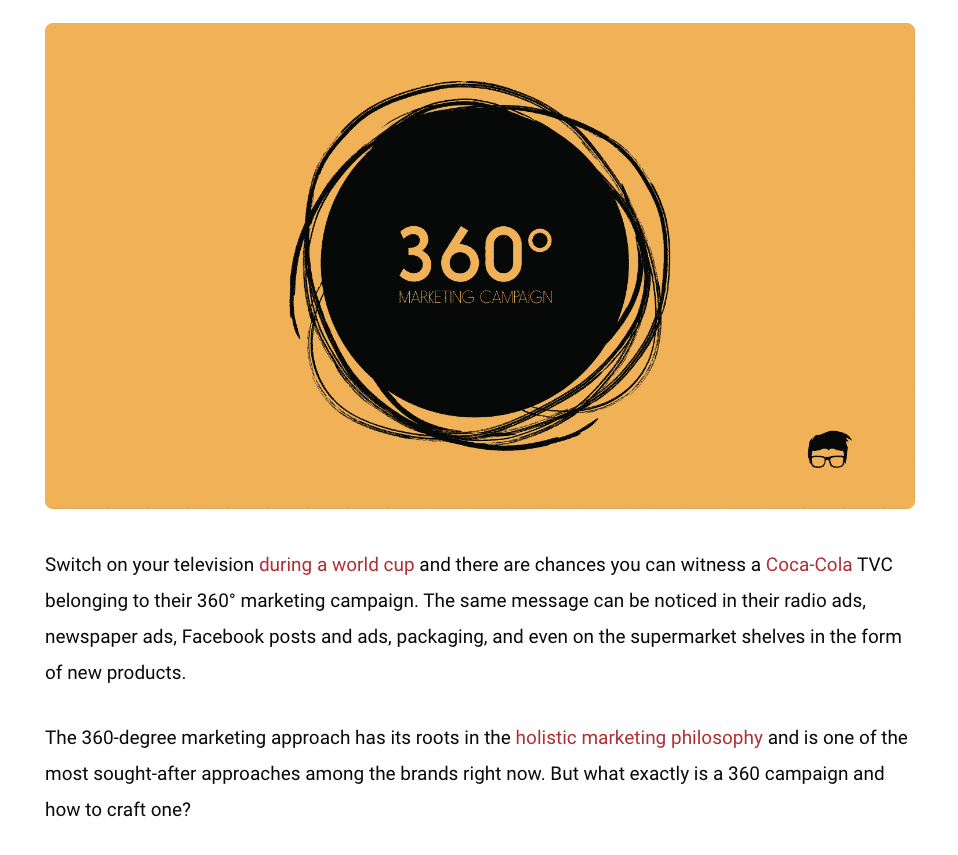The concept of what a campaign or marketing campaign means to many in-house agencies or marketing departments varies greatly. Most are focused on an unstructured content development approach along a proactive "content calendar" or worse a disfunctional, reactive, fire drill mentally of GET IT OUT NOW! Almost all are missing the glue that holds it all together. The big idea or the strategic overarching campaign concept.
Normally a digital campaign was a mix of paid, owned, and earned media (POE). It started with creating owned content that readers can research their problems, needs or wants and find your solutions. They like it, share it, and organic reach expands with little upfront investment called earned media. Companies use paid promotion to drive more readers to their content. And there is PR or media pitches that earn you a feature or paid placement in a relevant publication. Today organic reach is in steady decline, and paid + unpaid media are quietly merging. (1) The average number of people who see posts on social media that aren’t backed by ad dollars is still low. The easiest way to boost distribution and direct sales is to boost your ad budget. While an Ad Words campaign or digital campaign is technically a campaign it is lacking the holistic approach needed for brands to benefit and scale their awareness to levels that impact their bottom line, build trust, and strengthens relationships. Many cannot turn to traditionl and/or digital agencies for this level of thinking, as few start ups can afford that investment regardless of their venture capital funding as those dollars are typically allocated for budgets other than brand marketing. The result is awarenss levels never scale to the needed levels.
The alternative is to rely on the CMO or V.P. Marketing for strategic 'campaign' direction or if there isn't one the V.P. Product Marketing. These stakeholders are skilled at brand positioning or brand strategy vs campaign strategy and some do not understand there is a difference. 'Brand positioning' (5) is the unique space a brand occupies in the brains of the customers. 'Brand strategy' is the process of managing how your company is perceived by the public and with what values and messages it is associated. (6) Few client side marketing executives have the skillset, knowledge or time to create a strategically, integrated marketing campaign, much less a tag line that resonates at the level needed to reflect the brands core persona. Committee's of multiple stakeholders will typically end up spending hours or weeks without results or decide a mish mash of combined thoughts together as a place holder, because it is a place holder. A single minded, stategically relevant, point-of-difference, is not in their wheel house. It's also important to remember you are not your customer and that performance marketing always has its limitations, there's always a top ceiling to be hit.
An integrated marketing campaign includes all consumer touch-points not just Paid Media. Branding, P.O.E and traditional derived from one strategic idea.
Consumer touch-points are direct or indirect contacts a customer has with a brand. (2) A 360 campaign, one that impacts all of your consumer touch-points, is the real goal. Sale decks, Paid, Owned and Earned Media should all refelct this campaign. Traditional and digital channels, as well as, partner programs, branding, video,... Holistic is the goal. Fragmented is the enemy.
A creative brief. (3) A stratgic creative brief is a one page document that aligns a short list of decision makers around the campaign. Typical parts of the brief include: goals, requirements, target audience, budget, timeframe, support points. That's it. One page. A creative brief aligns and simplifys eliminating last-minute changes, misunderstandings and conflicting objectives.
"Brand marketing is way more important than product marketing."
~ Kipp Bodnar Hubspot CMO
Now how does one go from the creative brief to the big idea? What creates the conceptual campaign and establishes the brand?
That's the creative process. It's developed over decades of experience and without a strategic conceptual Creative Director it's unlikely a holistic (4) solution will come at all.
If you're a company looking to target a new audience or a 360 marketing campaign, contact Kevin Amter. His internationally awarded work launching the Microsoft Xbox platform and dozens of other Fortune 500 brands will strategically move your company in a winning direction.
SOURCE LINKS:
(1) Organic Reach is in Decline(2) How To Identify Your Consumer Touch-Points
(3) The Creative Brief Everything You Need To Know
(4) Holistic Marketing – Meaning, Concepts, and Importance
(5) Brand Positioning: Definition, Types, & Examples
(6) What Is a Brand Strategy?


